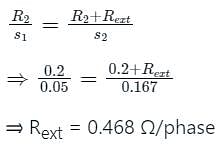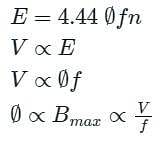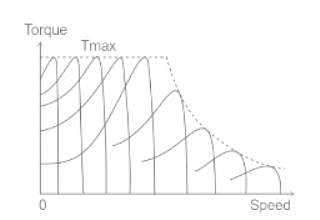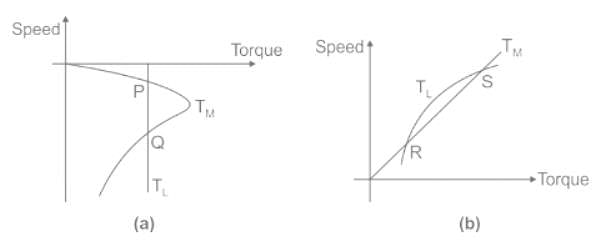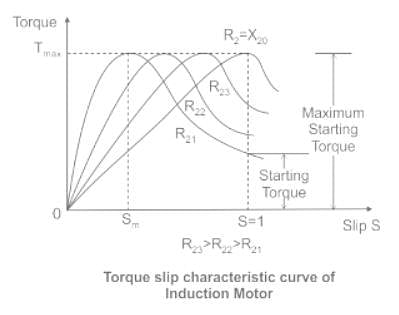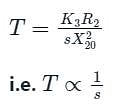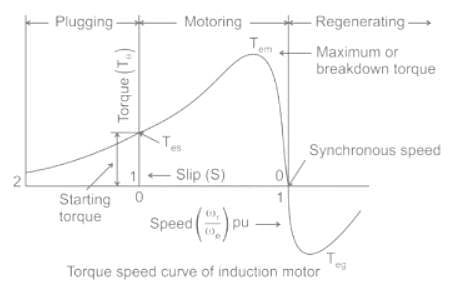Test: Torque-Speed Characteristics - Electrical Engineering (EE) MCQ
10 Questions MCQ Test - Test: Torque-Speed Characteristics
For a 3-phase slip ring induction motor, the maximum torque is 2.5 times the full load torque and the starting torque is 1.5 times the full load torque. The percentage reduction in rotor circuit resistance to get a full load slip of 3% is _______
Neglect stator impedance.
A 3000 V, 24 pole, 50 Hz, 3-phase, star connected induction motor has a slip ring rotor of resistance 0.016 Ω and stand still reactance 0.265 Ω per phase.
Full load torque is obtained at a speed of 247 rev per minute. Neglect rotor impedance.
Estimate the ratio of maximum to full load torque.
| 1 Crore+ students have signed up on EduRev. Have you? Download the App |
A 150 kW, 3000 V, 50 Hz, 6 – pole star connected induction motor has a star-connected slip ring rotor with a transformation ratio of 3.6 (stator/rotor).
The rotor resistance is 0.1 Ω/phase and its per phase leakage inductance is 3.61 mH. The stator impedance may be neglected. The starting torque on rated voltage with short-circuited slip rings is ______ (in N-m)
A three phase 460 V, 60 Hz, six-pole wound rotor induction motor drives a constant load of 100 N-m at a speed of 1140 rpm when the rotor terminals are short-circuited. It is required to reduce the speed of the motor to 1000 rpm by inserting resistances in the rotor circuit. The rotor winding resistance per phase is 0.2 ohms. Neglect rotational losses. The stator to rotor turns ratio is unity.
The value of the resistance inserted is ________ (in Ω/phase)
Which type of work is NOT done every week of the maintenance programme for induction motor?
During constant torque operation of a.c. electrical machines
The torque-speed characteristics of motor (TM) and load (TL) for two cases are shown in the figure (a) and (b). The load torque is equal to motor torque at points P, Q, R and S
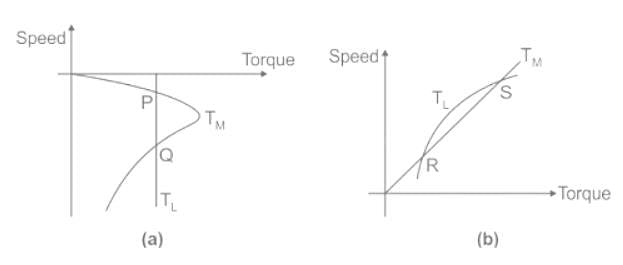
The stable operating points are
The shape of torque/slip curve of an induction motor is:
In the normal operating speed of an induction motor, torque is:
Which of the following speed control method of induction motor is from the stator side?




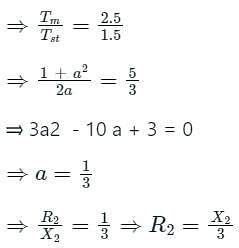










 remains the same, the rotor current I2 and the stator current I1 will remains the same and the machine develops the same torque.
remains the same, the rotor current I2 and the stator current I1 will remains the same and the machine develops the same torque.